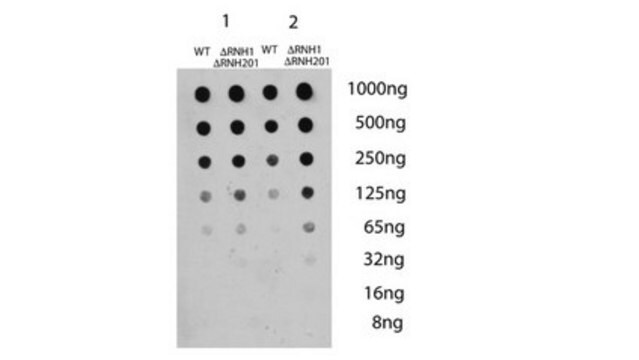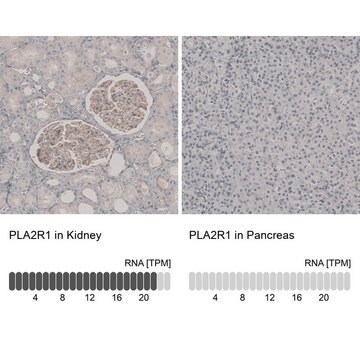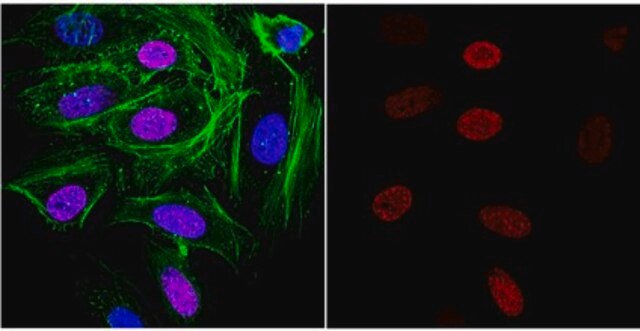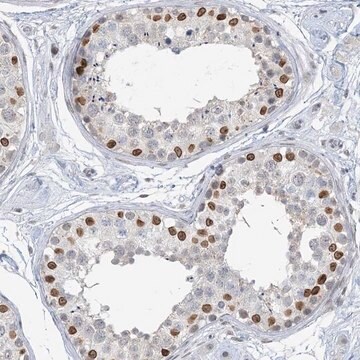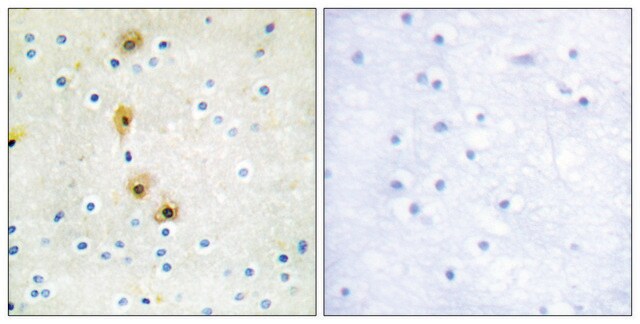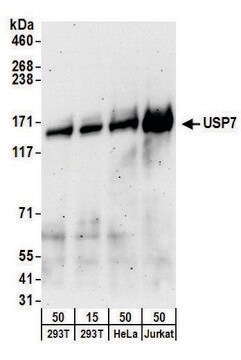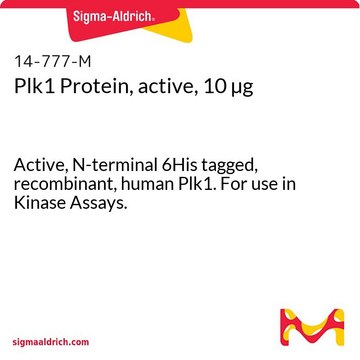일반 설명
We are committed to bringing you greener alternative products, which adhere to one or more of The 12 Principles of Green Chemistry.This antibody is Preservative-free, produced without the harm or sacrifice of animals and exceptionally stable to allow for ambient shipping and storage if needed and thus aligns with "Waste Prevention", "Designing Safer Chemicals" and "Design for Energy Efficiency".
Click here for more information.
ZooMAb® antibodies represent an entirely new generation of recombinant monoclonal antibodies.Each ZooMAb® antibody is manufactured using our proprietary recombinant expression system, purified to homogeneity, and precisely dispensed to produce robust and highly reproducible lot-to-lot consistency. Only top-performing clones are released for use by researchers. Each antibody is validated for high specificity and affinity across multiple applications, including its most commonly used application. ZooMAb® antibodies are reliably available and ready to ship when you need them.
특이성
Clone 1E19 is a ZooMAb® Rabbit recombinant monoclonal antibody that specifically detects USP7. It targets an epitope within 15 amino acids from the N-terminal region.
면역원
KLH-conjugated linear peptide corresponding to 15 amino acids from the N-terminal region of human Ubiquitin carboxyl-terminal hydrolase 7 (USP7).
애플리케이션
Quality Control Testing
Evaluated by Western Blotting in K562 cell lysate.
Western Blotting Analysis: A 1:3,000 dilution of this antibody detected USP7 in K562 cell lysate.
Tested applications
Western Blotting Analysis: A 1:3,000 dilution from a representative lot detected USP7 in U2OS, Jurkat, NIH3T3, and Cos7 cell lysates.
Immunohistochemistry (Paraffin) Analysis: A 1:1,000 dilution from a representative lot detected USP7 in human colon tissue sections.
Immunocytochemistry Analysis: A 1:300 dilution from a representative lot detected USP7 in Jurkat cells.
Affinity Binding Assay: A representative lot of this antibody bound USP7 with a KD of 1.8 x 10-7 in an affinity binding assay.
Note: Actual optimal working dilutions must be determined by end user as specimens, and experimental conditions may vary with the end user
표적 설명
Ubiquitin carboxyl-terminal hydrolase 7 (UniProt: Q93009; also known as EC:3.4.19.12, Deubiquitinating enzyme 7, Herpesvirus-associated ubiquitin-specific protease, Ubiquitin thioesterase 7, Ubiquitin-specific-processing protease 7, USP7) is encoded by the USP7 (also known as HAUSP) gene (Gene ID: 7874) in human. USP7 is a widely expressed deubiquitinating enzyme that erases ubiquitin and protects substrate protein from degradation. It displays a preference towards lysine 48-linked ubiquitin chains. It contains an N-terminal poly-glutamine stretch (poly Q), the tumor necrosis factor receptor- associated factors (TRAF) domain (aa 62-205), the catalytic domain (aa 208-560), and the C-terminal tandem ubiquitin-like (Ubl) domain (aa 560-1102). Full activity of USP7 requires the C-terminal Ubl domain that fold back onto the catalytic domain, allowing the remodeling of the active site to a catalytically competent state by the C-terminal peptide. The catalytic domain has a three-domain architecture, including Fingers, Palm, and Thumb domains. 19 residues in the C-terminal region (aa 1084 1102), which are conserved across species are reported to stabilize the ubiquitin binding conformation of the catalytic domain. Individual point mutations at isoleucine residues 1100 or 1098 are able to abolish its deubiquitinase activity. USP7 is known to deubiquitinate multiple target proteins, including FOXO4, p53, DNMT1, PTEN, and DAXX. By preventing the degradation of p53/TP53, it enhances p53/TP53-dependent transcription regulation, cell growth repression, and apoptosis. Overexpression of USP7 has been reported in prostate cancer. This ZooMAbZooMAb® recombinant monoclonal antibody, generated by our propriety technology, offers significantly enhanced specificity, affinity, reproducibility, and stability over conventional monoclonals. (Ref.: Wang, Z., et al. (2019). Front. Pharmacol. 10; 427; Li, M., et al. (2002). Nature. 416(6881); 648-653).
물리적 형태
Purified recombinant rabbit monoclonal antibody IgG, lyophilized in PBS, 5% Trehalose, normal appearance a coarse or translucent resin. The PBS/trehalose components in the ZooMAb formulation can have the appearance of a semi-solid (bead like gel) after lyophilization. This is a normal phenomenon. Please follow the recommended reconstitution procedure in the data sheet to dissolve the semi-solid, bead-like, gel-appearing material. The resulting antibody solution is completely stable and functional as proven by full functional testing. Contains no biocide or preservatives, such as azide, or any animal by-products. Larger pack sizes provided as multiples of 25 μL.
재구성
300 μg/mL after reconstitution at 25 μL per vial. Please refer to guidance on suggested starting dilutions and/or titers per application and sample type.
저장 및 안정성
Recommend storage of lyophilized product at 2-8°C; Before reconstitution, micro-centrifuge vials briefly to spin down material to bottom of the vial; Reconstitute each vial by adding 25 μL of filtered lab grade water or PBS; Reconstituted antibodies can be stored at 2-8°C, or -20°C for long term storage. Avoid repeated freeze-thaws.
법적 정보
ZooMAb is a registered trademark of Merck KGaA, Darmstadt, Germany
면책조항
Unless otherwise stated in our catalog or other company documentation accompanying the product(s), our products are intended for research use only and are not to be used for any other purpose, which includes but is not limited to, unauthorized commercial uses, in vitro diagnostic uses, ex vivo or in vivo therapeutic uses or any type of consumption or application to humans or animals.

